Why Israel’s Jets Were Grounded and America’s Bomber Flew
History won’t remember the exact moment the bomb dropped. There were no satellite images released, no press briefings, no shaky iPhone footage of mushrooming dust clouds outside Natanz or Fordow.
What we know for certain is this: a U.S. aircraft, most likely a B-2 Spirit stealth bomber flying from Whiteman Air Force Base under a veil of deniability, unleashed a GBU-57A/B — the “Massive Ordnance Penetrator,” or MOP — deep into the Iranian desert.
And it was not Israel that pulled the trigger.
The obvious question reverberates louder than the explosion itself: Why didn’t the United States hand the bomb to Israel, its closest ally in the region, and let them handle the delivery?
The answer lies in what didn’t happen — Israel’s technical limitations, strategic vulnerability, and the precarious chessboard of Middle Eastern power projection.
Not a Matter of Will, But Of Wings

Israel lacked the structural support or flight range to haul the MOP across the 1,000+ miles of hostile airspace.
Let’s be clear: Israel has the motive and the intelligence - and most importantly, the sheer will and readiness to do what it must. What it lacks is airframe and payload capacity.
The GBU-57 is a 30,000-pound, bunker-busting beast that requires a B-2 or B-52 bomber to deliver. Israel’s most advanced long-range strike aircraft — the F-35I “Adir” and older F-15I “Ra’am” — simply cannot carry it, not by a long shot.
Israel has no bombers with the structural support or flight range to haul the MOP across the 1,000+ miles of hostile airspace to deep Iranian targets and back without U.S. in-flight refueling and air cover. The idea of reconfiguring these aircraft or acquiring such bombers from the U.S. was likely floated and dismissed. The optics alone would scream preemptive war.
So, even if Israel wanted to deliver the MOP, it’s not just about geopolitics — it’s physics.
This mission, codenamed Operation Midnight Hammer, was clearly a complex, high-risk mission that showcased the full spectrum of American long-range strike capabilities. How did America do it?
The mission hinged on the Northrop Grumman B-2 Spirit, the only aircraft in the U.S. arsenal capable of carrying the 30,000-pound GBU-57 MOP.
The B-2’s radar-absorbent materials and low observable profile allowed it to penetrate Iranian airspace undetected. With a combat radius of ~6,000 nautical miles (11,000+ km) with one aerial refueling, the B-2 can fly intercontinental missions from U.S. bases like Whiteman AFB in Missouri or forward-deployed locations such as Diego Garcia or Guam.
Each B-2 can carry two MOPs internally, preserving stealth and aerodynamic efficiency. And yes, inflight refueling Happened
The Pentagon confirmed that over 125 U.S. aircraft participated in the strike, including dozens of aerial refueling tankers. These tankers likely included: KC-135 Stratotankers, KC-10 Extenders, and KC-46 Pegasus. These aircraft enabled the B-2s to fly an 18-hour round-trip mission with minimal radio emissions to maintain tactical surprise.
Air Cover And Support Assets

While the B-2s themselves flew in stealthily, they were not alone in the broader operational theater. F-22 Raptors and F-35s were likely ready to provide air superiority patrols in adjacent airspace to deter Iranian interceptors. EA-18G Growlers or other electronic warfare platforms may have jammed Iranian radar and communications.
AWACS and ISR aircraft (like the E-3 Sentry and RQ-4 Global Hawk) provided real-time surveillance and command-and-control. Importantly, Tomahawk cruise missiles launched from a U.S. submarine struck surface targets in Isfahan just before the B-2s arrived, degrading Iranian air defenses and drawing attention away from the main axis of attack.
Route Planning And Deception
The U.S. used strategic deception to mask the true flight path. A decoy formation flew west over the Pacific, while the real strike group headed east toward Iran. In all that time, US President Trump told the media he was still mulling the possibility of striking or not striking Iran - and will have made a decision within two weeks.
The B-2s apparently flew over international airspace and possibly through friendly corridors over the Arabian Sea, avoiding radar coverage and minimizing exposure to Iranian air defenses.
The MOP was critical because the Fordow Fuel Enrichment Plant is buried under 80–90 meters of rock and reinforced concrete. Only the GBU-57 MOP, designed to penetrate 60 meters of concrete or 200 feet of earth, could plausibly damage it. The B-2 is the only aircraft capable of delivering this weapon, making it indispensable for the mission.
The B-2 Spirit Bomber
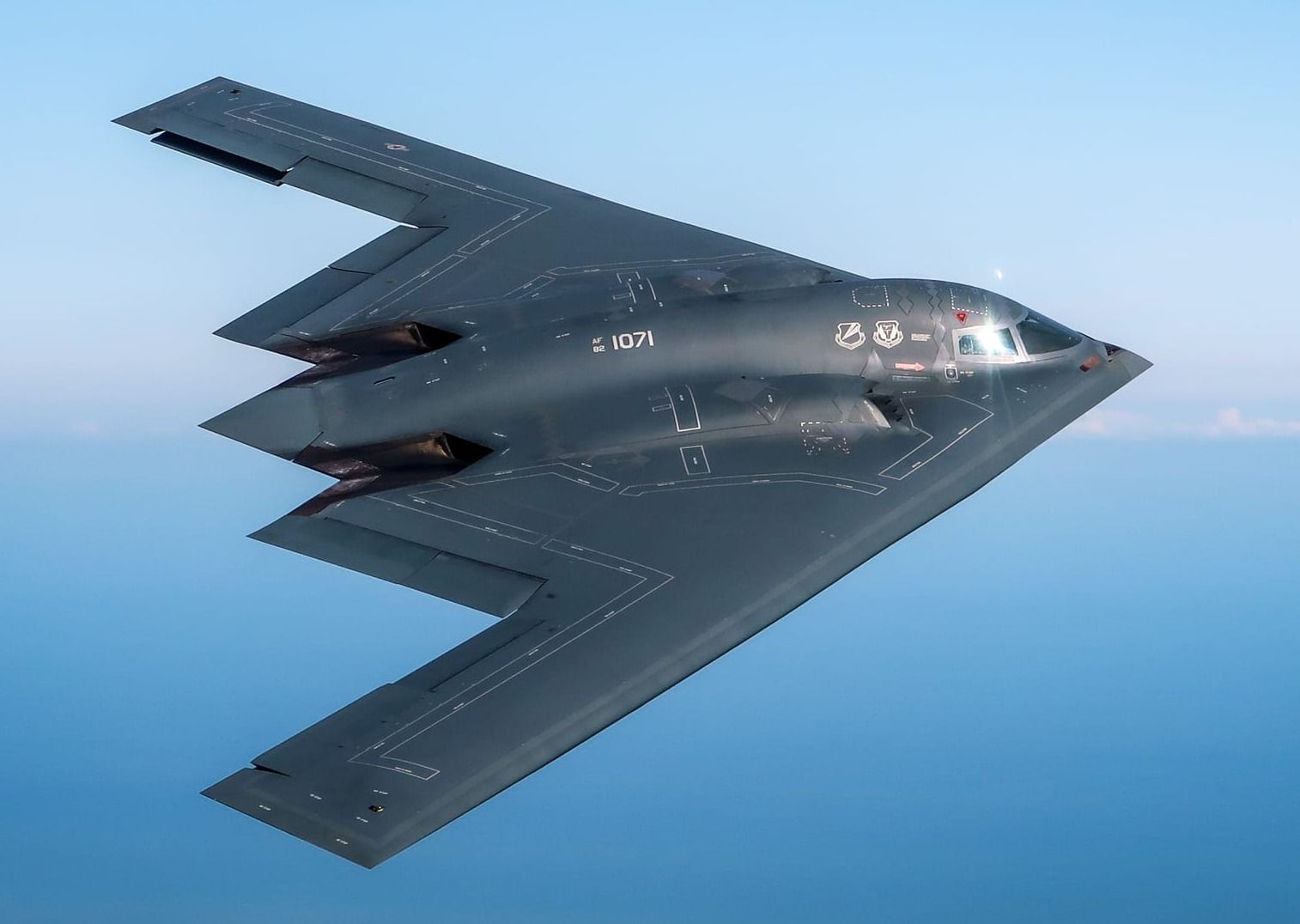
It flies at altitudes reaching 50,000 feet, placing it high above most surface-based air defenses and enabling broad sensor coverage.
The Northrop Grumman B-2 Spirit, often dubbed the “Stealth Bomber,” is one of the most advanced and enigmatic aircraft ever built. Designed to penetrate the most formidable air defenses on Earth, it embodies decades of innovation in stealth, aerodynamics, and systems integration.
The B-2’s roots trace back to the Advanced Technology Bomber (ATB) program of the late 1970s, born from the Cold War imperative to strike deep into Soviet territory without detection. Northrop (later Northrop Grumman) won the contract in 1981, leveraging its legacy of flying wing designs pioneered by Jack Northrop in the 1940s.
The B-2’s flying wing configuration, lacking vertical stabilizers, was chosen for its inherently low radar cross-section.
The aircraft was first unveiled in 1988 and flew for the first time in 1989. It entered operational service in 1997, with only 21 units built due to astronomical costs—each aircraft costing over $2 billion when factoring in R&D and support infrastructure.
The B-2 Spirit\s airframe is built around a striking flying wing design. Unlike conventional aircraft, it lacks vertical stabilizers or protruding fuselage elements, which drastically reduces its radar signature. Its entire surface is smoothly contoured and constructed from advanced composite materials that are embedded with radar-absorbent coatings.
These specialized coatings absorb incoming radar waves while the sharply aligned leading edges deflect signals away from their source. This careful geometry gives the B-2 a radar cross-section roughly equivalent to that of a small bird, an astonishing feat for an aircraft with a 172-foot wingspan.
Its stealth is not confined to radar evasion alone.
The B-2's designers also mitigated heat detection by deeply burying the engines inside the wing structure. This layout, coupled with serpentine air intakes, prevents radar and infrared systems from seeing the hot turbine blades.
Exhaust gases are cooled before leaving the aircraft, reducing infrared visibility. To stay hidden acoustically and visually, the B-2 produces muted engine noise and is finished in a matte black coating, helping it melt into the night sky during missions.
At its core, the B-2 is powered by four General Electric F118-GE-100 turbofan engines. These non-afterburning engines are ideal for sustained subsonic flight, operating best at high altitudes for long durations.
Each engine delivers roughly 17,300 pounds of thrust, allowing the B-2 to cruise near Mach 0.95. Without refueling, the aircraft can cover over 6,000 nautical miles, and when aided by aerial tankers, it can strike virtually any target on the globe and return without landing.
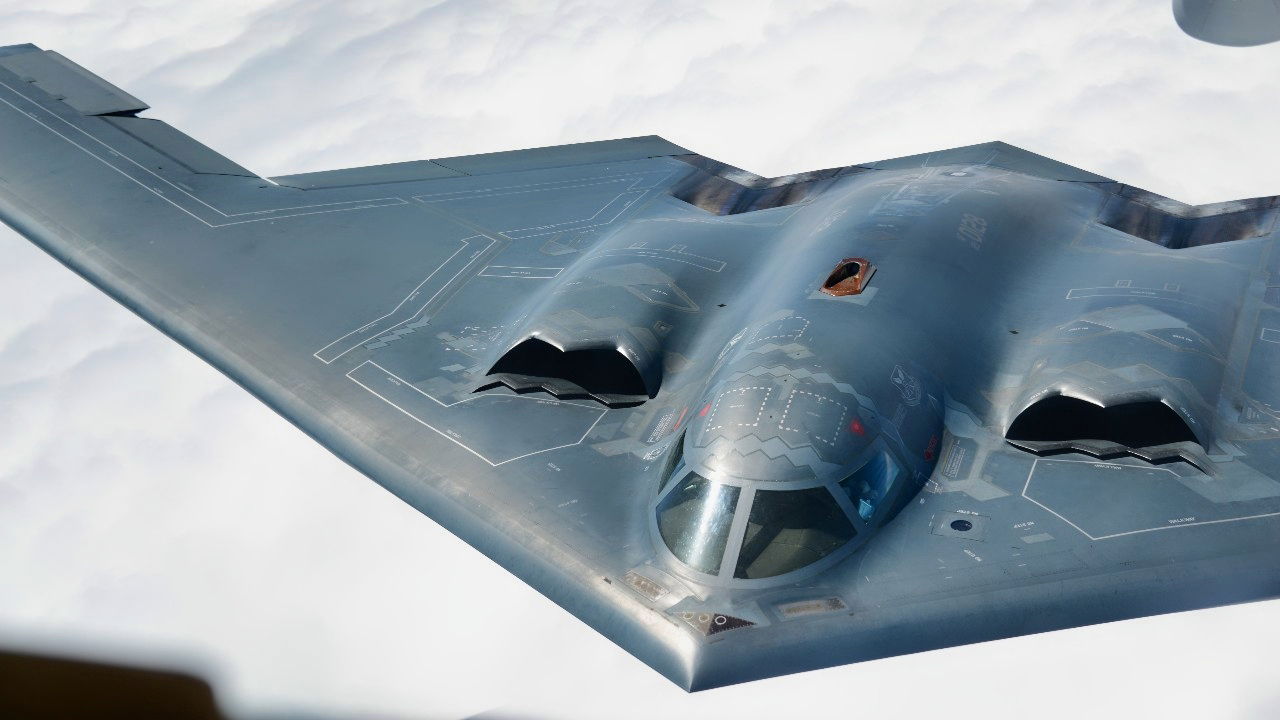
It flies at altitudes reaching 50,000 feet, placing it high above most surface-based air defenses and enabling broad sensor coverage.
Handling the B-2 in flight is no simple affair. Due to its flying wing structure, it lacks the natural aerodynamic stability of more conventional designs. The aircraft’s stability is instead governed by a sophisticated fly-by-wire system that continuously tweaks control surfaces to keep the plane level and responsive.
Pilots rely on a blend of GPS, inertial navigation systems, and terrain-following radar to navigate. The radar system itself—an AN/APQ-181—is a multi-mode suite capable of high-resolution ground mapping and tracking moving targets, while also supporting terrain-avoidance and precision targeting.
For self-protection in contested airspace, the B-2 is equipped with a powerful defensive management system (DMS) that monitors for enemy radar emissions. It doesn’t just detect threats; it classifies them and suggests evasive rerouting or electronic countermeasures.
This system was upgraded in recent years under the DMS-M program, greatly expanding its real-time situational awareness and survivability in high-threat zones. Coupled with secure, beyond-line-of-sight communications via EHF SATCOM, the B-2 remains in seamless contact with U.S. command networks even on intercontinental missions.
The Spirit's Weapons And Missions
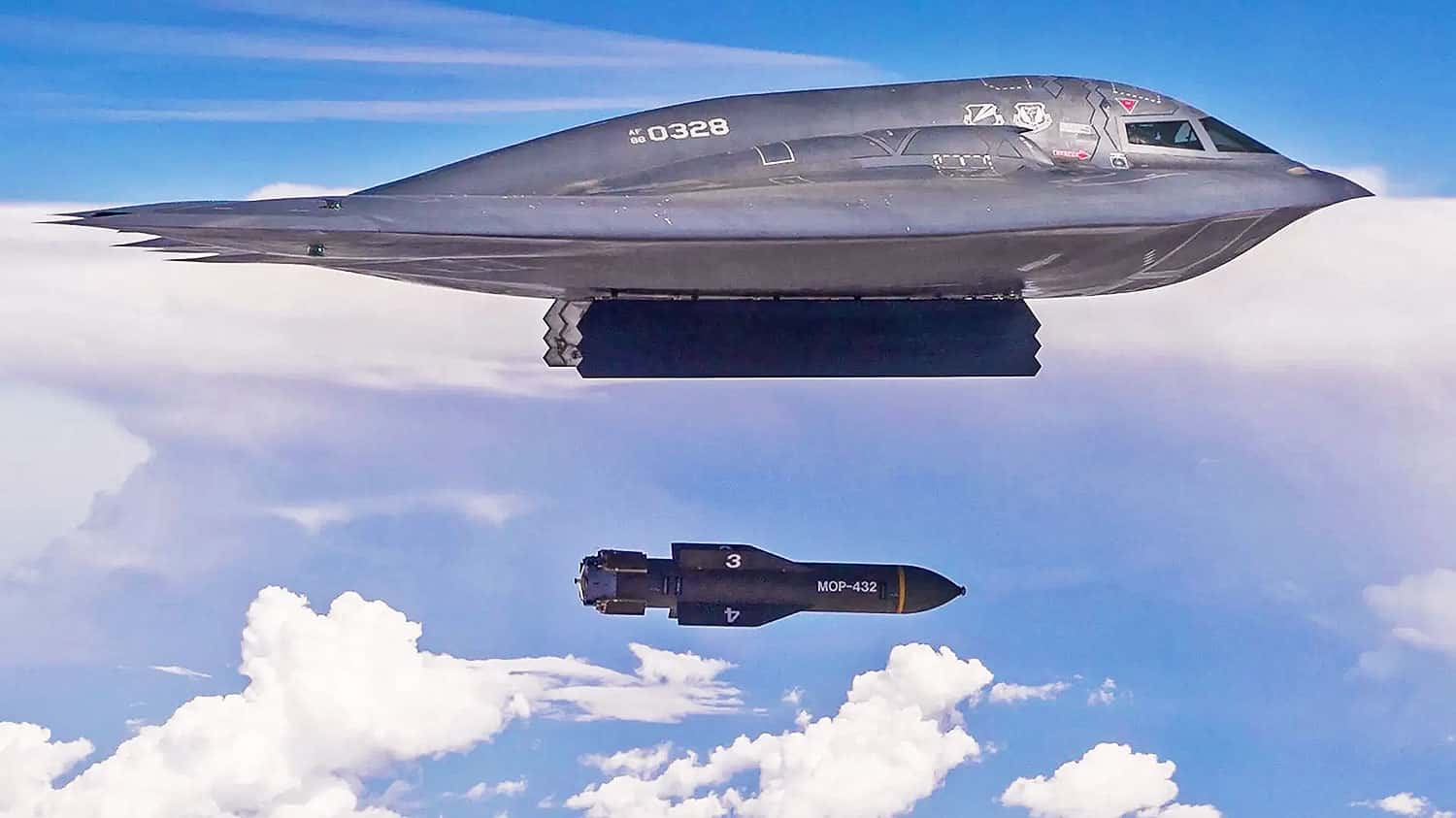
The U.S. strike on Iran’s nuclear facilities was a masterclass in long-range precision warfare.
The B-2’s lethality stems from the careful concealment of its weaponry. Housed within two internal bomb bays to preserve its stealth profile, the bomber can deploy an extensive array of munitions.
For hard-target defeat, it uniquely carries the GBU-57 Massive Ordnance Penetrator, capable of cracking deeply buried, reinforced facilities like Iran’s Fordow site. It also carries Joint Direct Attack Munitions (JDAMs) for precision surface strikes and can be outfitted with strategic nuclear weapons such as the B61 and B83.
In addition, it can launch standoff munitions like the AGM-158 JASSM-ER, allowing it to strike from outside heavily defended zones.
Although envisioned primarily as a nuclear deterrent, the B-2 has seen significant conventional use. Its combat debut came during NATO’s Kosovo campaign in 1999, with missions launched directly from Whiteman Air Force Base in Missouri that lasted over 30 hours.
It went on to support the opening stages of the war in Afghanistan in 2001 and later spearheaded the “shock and awe” bombardment of Iraq in 2003. In 2011, it participated in the Libya intervention by neutralizing hardened aircraft shelters.
Most recently, in 2025, it demonstrated its strategic precision by striking Iran’s fortified nuclear facilities at Natanz and Fordow, a mission that underscored its unique role in deep-penetration strike scenarios.
Ultimately, the U.S. strike on Iran’s nuclear facilities was a masterclass in long-range precision warfare. It combined:
- Stealth penetration
- Aerial refueling
- Electronic warfare
- Cruise missile coordination
- Global logistics and deception
All without a single aircraft being lost or detected until after the bombs hit. It was the largest B-2 combat operation in U.S. history—and a stark reminder of the reach and precision of American airpower.
Did The U.S. Clear Iranian Airspace Alone?
Not Likely.
Israeli Unit 8200, one of the most advanced SIGINT outfits on Earth, ran a massive disinformation campaign.
Here’s where it gets murky — and fascinating.
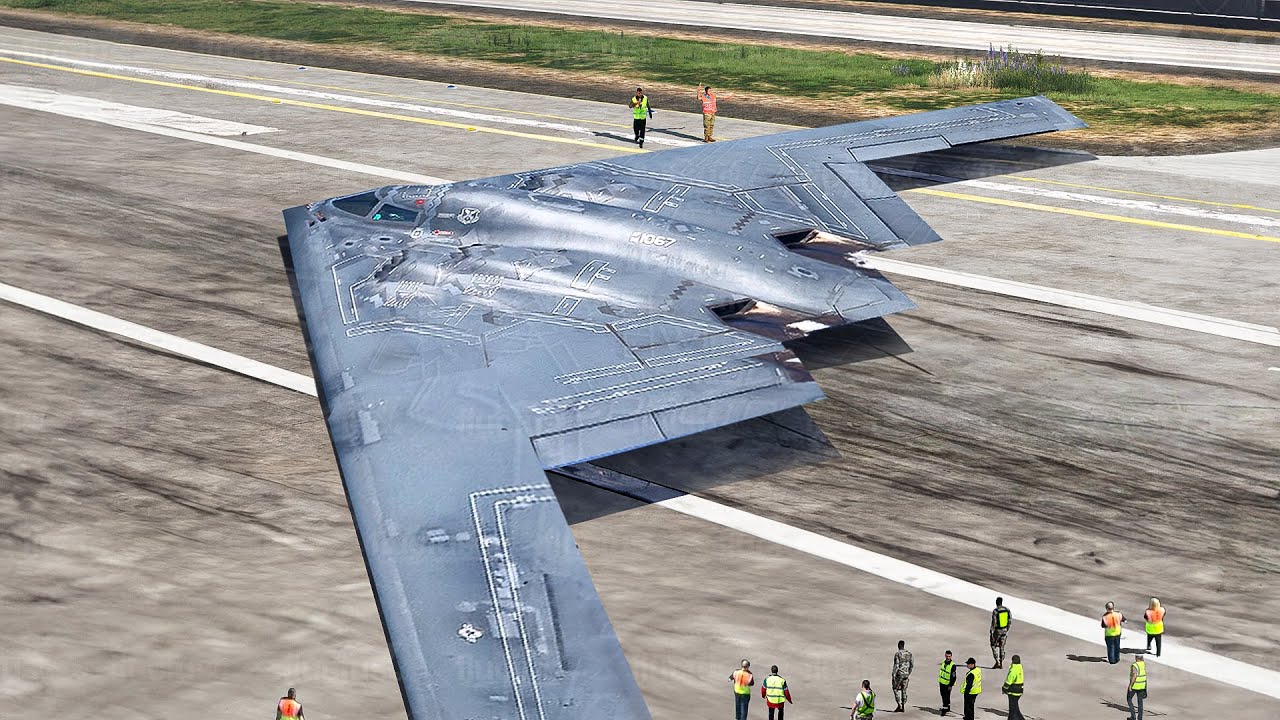
The U.S. strike required a sterilized air corridor across at least 1,000 miles of hostile or semi-hostile skies. Jordan, Iraq, and possibly parts of Syria had to be navigated with either stealth or covert diplomatic clearance. But Israel’s role in this phase was likely more electronic and deceptive than aerial.
Expect that Israeli Unit 8200, one of the most advanced SIGINT outfits on Earth, ran a massive disinformation campaign, spoofing radar returns, jamming critical Iranian command relays, and flooding early warning systems with false positives.
At the same time, Israeli drones and F-35Is may have ghosted along the periphery of Iranian airspace, triggering early radar sweeps and drawing eyes away from the real incursion corridor — the B-2 flying low and slow.
If this sounds surgical, it's because it was. The Iranian air defense grid never lit up in time, and that’s not luck. It's a covert U.S.-Israeli joint op in everything but name.
Trump’s Calculus: Optics, Ownership, And The Message
So why did Trump green-light a direct U.S. strike, rather than outsource it to Israel?
Three reasons:
1. Strategic Optics
By owning the strike, the U.S. signaled unmistakably to Tehran — and to Beijing, Moscow, and Pyongyang — that it is not hiding behind proxies anymore. This was the anti-Obama doctrine in full swing: no red lines drawn in the sand, only craters where threats once stood.
2. Operational Control
Trump and his Pentagon team likely did not trust anyone else with the tight operational window this strike required. Time-sensitive intelligence, limited opportunity to penetrate airspace, and catastrophic risk in failure demanded U.S. hands on the wheel.
3. Denial And Plausibility
Strange though it may sound, a U.S. strike can be more easily denied than an Israeli one. Iran has always treated U.S. strikes with a mix of bluster and strategic ambiguity — remember Soleimani? Israel, by contrast, provokes an automatic escalation spiral in the region. Trump bet that Iran wouldn’t retaliate overtly if the U.S. struck swiftly, and so far, that bet holds.
What now?
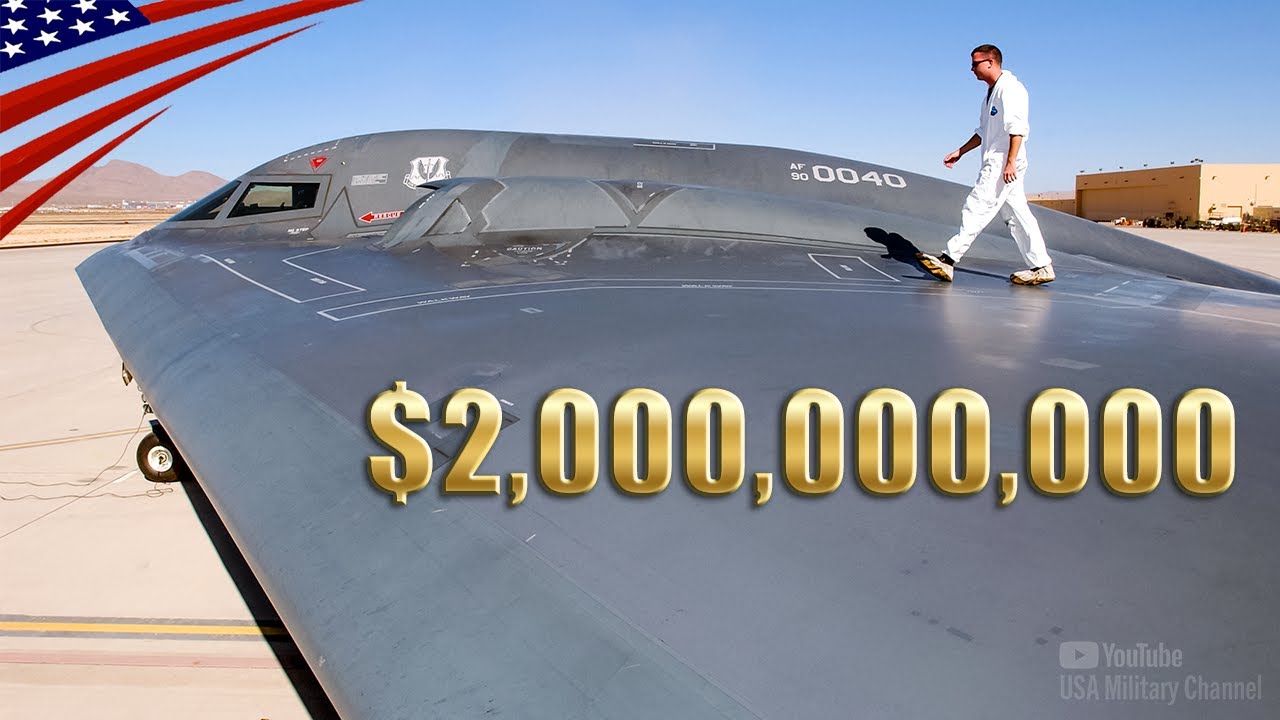
The regional fallout won’t be in rubble but alliances.
Saudi Arabia and the UAE, seeing the U.S. reassert its direct military presence, may now pivot away from quiet diplomacy with Tehran and revive security compacts with Washington.
Turkey and Qatar, increasingly rogue in their regional policies, may double down on autonomous defense postures, hedging against unpredictable U.S. involvement.
China and Russia, both courting Iran as part of their anti-West bloc, are now watching one of their potential Middle East linchpins get publicly humiliated by a Western military ghost that struck undetected.
Most dangerously, Iran has likely reactivated asymmetric proxies across Lebanon, Iraq, and Yemen. Expect an uptick in cyberattacks, oil tanker sabotage, and shadow strikes in the Gulf — not because Iran wants war, but because it needs face.
In the End: A Message In Metal
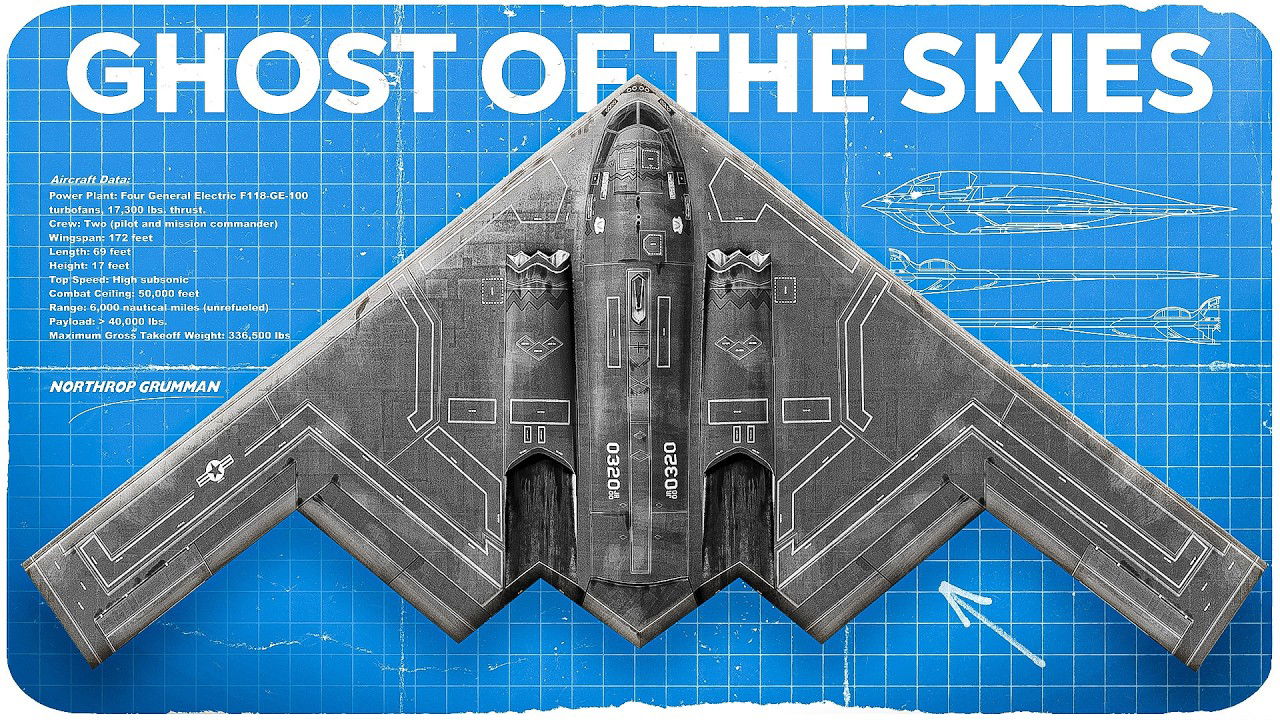
America bombed the idea that it needs a proxy to act.
The decision to drop a U.S. bomb with U.S. wings into Iranian earth wasn’t about destroying centrifuges but about redefining the chain of command in global deterrence. America didn’t just bomb Iran. It bombed the idea that it needs a proxy to act. And in doing so, it placed Israel, the Arab states, and Tehran itself on notice.
In the post-bomb world, deterrence is no longer delegated. It is delivered — quietly, surgically, and unmistakably — by the party with the capacity to carry the weight.
In this case, 30,000 pounds of it.